Soccer Ball History

Soccer has been played in various forms throughout history. Many sites on the world wide web have information on the history of football or soccer and who invented the original soccer ball. Of course, here at Soccer Ball World, we will concentrate on the history and evolution of the soccer ball.
Click on the titles below to go directly to that section:
- Early Ball History
- Balls in the 1800’s
- Goodyear’s 1855 Soccer Ball
- Soccer Balls in the 1900’s
- First World Cup Soccer Ball with team pictures
- Synthetic Soccer Balls
- The Buckminster Soccer Ball
- History of the World Cup Official Match Balls
- Adidas Finale – UEFA Champions League Finale Balls 2001-2015
- The European Championship Match Balls 1984-2015
- Official match balls of the Olympic Games
- Adidas Questra family
- 2000 and beyond
- Adidas Pelias 2 – Official Match Ball for all FIFA events in 2005 in Europe
Early Soccer Ball History
Through out history, humans have enjoyed kicking a ball or something like a ball. South American Indians were known to use a light elasticized ball. However; rubber was not to be practically manufactured until a few thousand years later.
According to historical references and legend, early balls ranged from human heads, stitched up cloth, animal and human skulls to pig or cow bladders.
During the Ts’in and Han Dynasties (255 BC-220 AD), the Chinese played ‘tsu chu’, in which animal-skin balls were dribbled through gaps in a net stretched between two poles. Certain ancient Egyptian rites are said by historians to have similarities with football, and both the ancient Greeks and Romans also played a game that entailed carrying and kicking a ball.
According to pre-medieval legend, an entire village would kick a skull along a path to a nearby village square. The opposing village would in turn attempt to kick the skull to the first village’s square. Wow, that probably caused more riots than in modern soccer games.
A Medieval custom was to take pig bladders used from live stock killed in preparation for winter sustenance and inflate them. They would play a game using their feet and hands to keep the “ball” in the air. Sounds like hacky sack to me.
The animal bladder balls were eventually covered with leather for better shape retention.
Balls in 1800’s
In 1836 Charles Goodyear patented vulcanized rubber. Prior to this, balls were dependant on the size and shape of the pig’s bladder. The more irregular the bladder, the more unpredictable the behavior of the ball was when kicked. However; it would not be until the twentieth century until most balls were made with rubber bladders.
In 1855, Charles Goodyear designed and built the first vulcanized rubber soccer balls (footballs). The following picture shows the Charles Goodyear ball that is on display at the National Soccer Hall of Fame which is located in Oneonta, NY, USA.
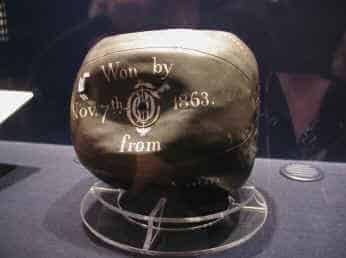
For more information on the Charles Goodyear oldest soccer ball, click here
In the 1862, H.J. Lindon developed one of the first inflatable rubber bladders for balls. Tragically his wife previously died from lung disease. Reportedly from blowing up many hundreds of pig’s bladders. Lindon was probably inspired to develop the inflatable rubber bladder because of the ill effects of blowing up pig’s bladders. The balls with the rubber bladders ensured that the ball remained hard and oval. Lindon also claimed to have invented the rugby ball but did not patent the idea. In those days, the round ball was preferred because it was easier to kick and the oval ball was easier to handle.
In 1863 the newly formed English Football Association met to hammer out the laws of the game. No description of the ball was offered in the first set of rules. When the rules were revised in 1872 it was agreed that the ball “must be spherical with a circumference of 27 to 28 inches” (68.6 cm to 71.1 cm). That rule remains in today’s FIFA laws. Very little has ever been written about the ball, probably because it has remained very much the same over the years. The official size and weight of the ball was first fixed in 1872. It was changed ever so little in 1937 when the official weight was increased from 13-15 oz to 14-16 oz. The Encyclopedia of Association Football (first published in England in 1956) says as follows “According to the Laws of Football, the ball must be spherical with an outer casing of leather or other approved materials. The circumference shall not be more than 28 in., nor less than 27 in, while the weight at the start of the game must not be more that 16 oz., nor less than 14 oz.” The Laws of the Game as published in 2001 say exactly the same thing as to size and weight. What has changed drastically over the last 30 or so years is the material the ball is made of and the shape of the panels that make up the ball.
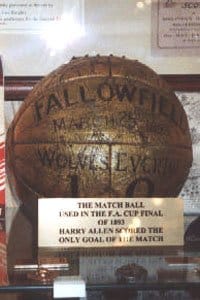
Match Ball used in the FA Cup Final of 1893
Wolves 1 Everton 0
Mass production of soccer balls started as a direct consequence of the English Football League that was founded in 1888. Mitre and Thomlinson’s of Glasgow were two of the first companies to mass produce soccer balls during that time. They touted that the key element in a quality football was how well it could retain it’s shape. Strength of the leather and the skills of the cutters and stitchers were the main factors in producing a football that would retain it’s shape. The top grade covers were made with leather from the rump of a cow while lower quality balls were made from the shoulder. Advances in ball design came with the development of interlocking panels instead of the previously used leather sections that met at the north and south poles of the ball. The balls were then produced with a more acceptable round shape.
Soccer Balls in the 1900’s
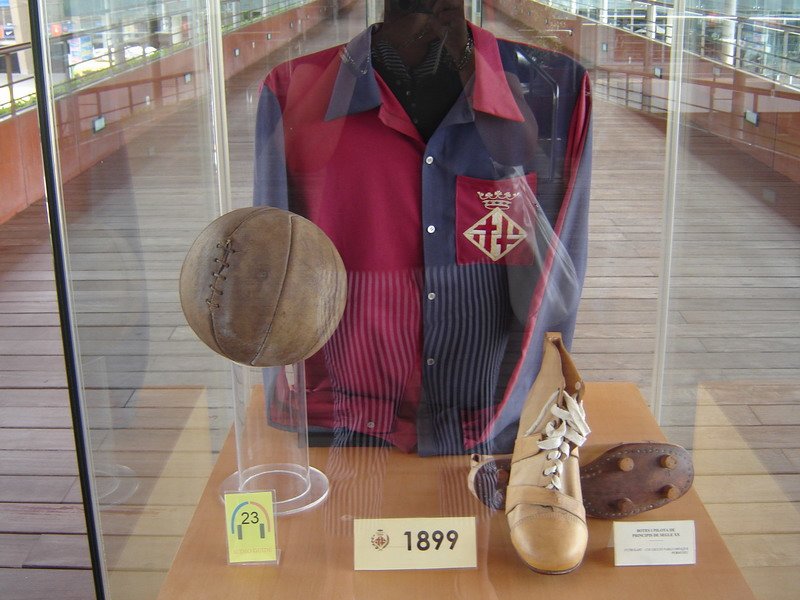
Official FC Barcelona Museum 1899 Eight Panel Ball
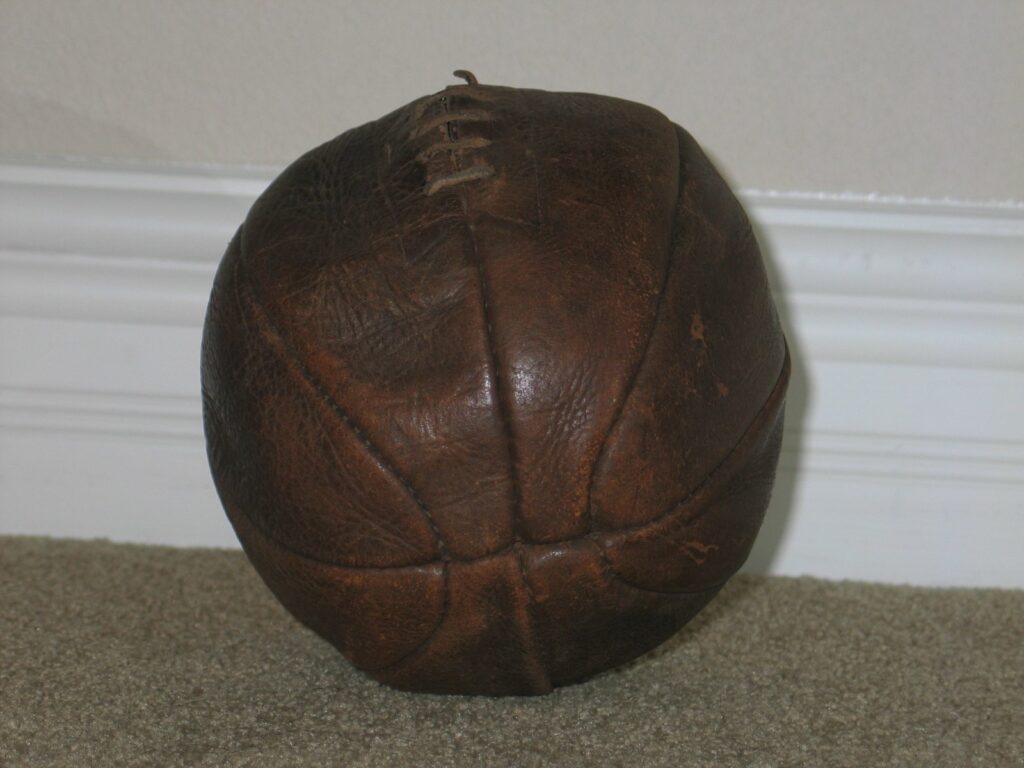
1900 Eight Panel Ball – Picture from Jacques Barralon
1910 Soccer Ball
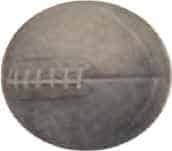
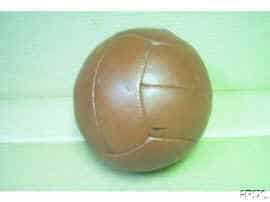
Unknown
By the 1900’s bladders were made with stronger rubber and could withstand heavier pressure. Most balls produced by that time used rubber bladders. The balls were made from inner tubes covered with heavy brown leather. These balls would bounce easier and yet could be kicked. Most balls had a tanned leather cover with eighteen sections stitched together arranged in six panels of three strips each. Each section was stitched together by hand with five-ply hemp and a small lace-up slit was on one side. All of the stitching was done with the ball cover inside out. Once completed, the cover was reversed with the stitching on the inside. An un-inflated bladder was then inserted through the slit. A long stem neck (aperture) extending from the bladder was used to inflate the ball. Once inflated, the tube was inserted through the 15 cm slit and then the opening was laced up tight. You can imagine how often that these soccer balls had to re-inflated. Even during a game.
These balls were good for kicking but was painful when heading due to the heavy stitching and the water absorption characteristics of the leather. Water absorption of the leather during rain made the ball very heavy and caused many head injuries. Other problems of the old leather balls were the various quality of cowhides used. Footballs varied in thickness and quality and the leather often degraded during the match.
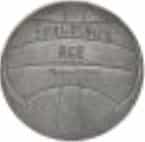
1929 Soccer Ball
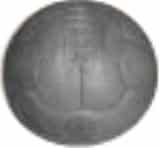
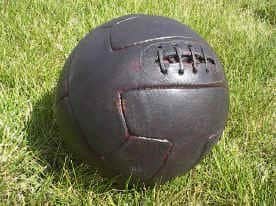
Unknown
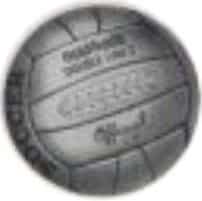
1937 Soccer Ball
The soccer ball may have even played a part in the outcome of the first world cup in 1930. Argentina and Uruguay could not agree on which ball to use. So they decided to use an Argentinean ball the first half and a ball supplied by Uruguay in the second half. As it turned out, Argentina was ahead at halftime 2-1using their soccer ball. However; Uruguay came back to win the match in the second half 4-2 using their ball!
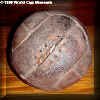
1930 World Cup Soccer Ball of “Tiento”
During World War II there were further production enhancements. The addition of a carcass made of strong cloths between the bladder and outer cover made controlling the shape easier, provided damping, and made the ball stronger. However; soccer balls played a crucial role in the outcome of matches due to the ball actually bursting during a game. The reason for the low quality balls just after World War II was blamed on the poor quality of the leather covers.
Water absorption was improved by using synthetic paints and other non-porous materials to coat the leather. Also, a new type of valve was invented that eliminated the laced slit on soccer balls.
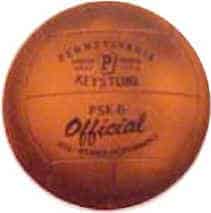
1950 Soccer Ball
In 1951 a white ball was first permitted to help spectators see the ball easier with the advent of floodlights. White soccer balls were un-officially used as early as 1892. The leather was simply white washed to produce the white ball. Orange balls were also first introduced in the 1950’s to help see the ball in the snow.
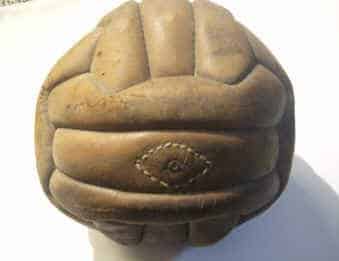
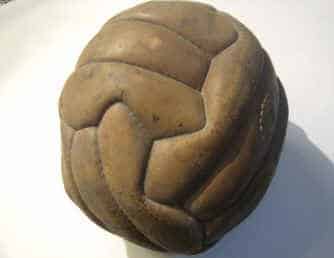
1950 era 18 panel ball (pictures from Francisco Aquino)
Different countries favored different types of soccer balls in the early days of international soccer. This caused much controversy. FIFA standardized the size, weight and type of balls with the introduction of an international board.
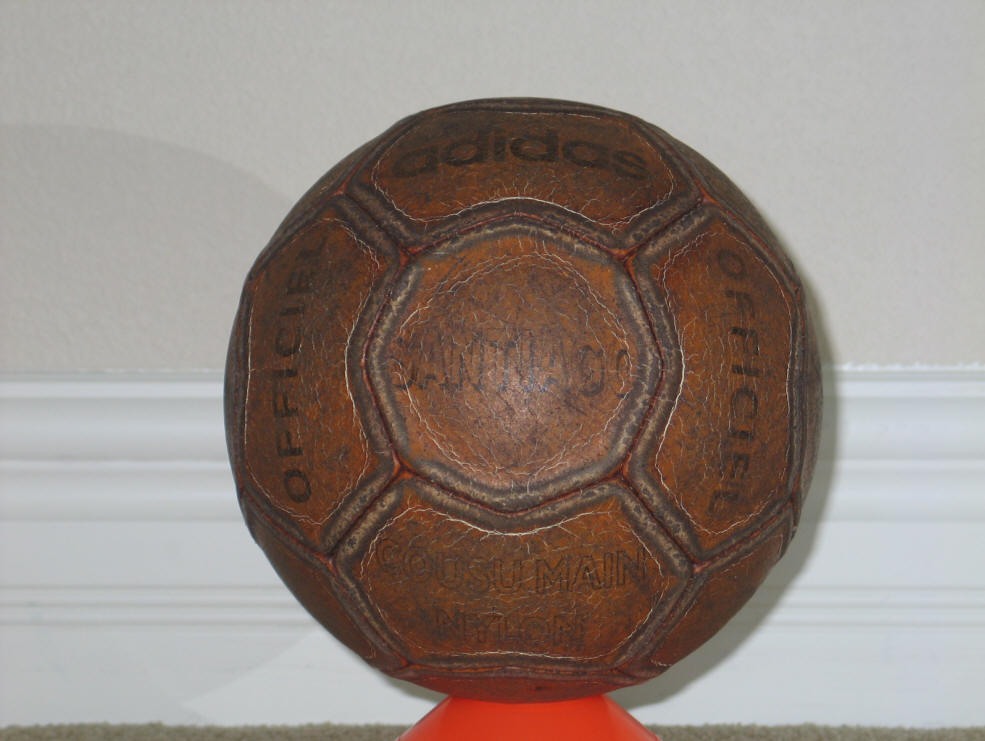
1963 Santiago – Picture provided by Jacques Barralon
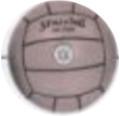
1963 Leather Soccer Ball
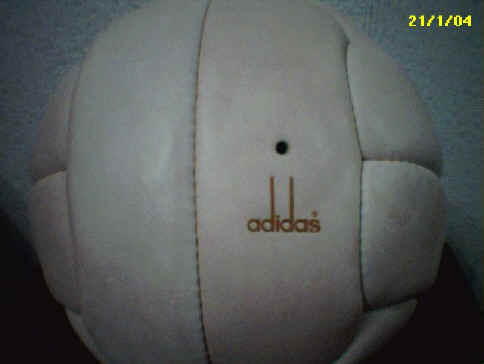
White Santiago version of the “unofficial” World Cup 1966 England Ball (courtesy of carlos del castillo)
Synthetic Soccer Balls
It was not until the 1960’s that the first totally synthetic ball was produced. But it was not until the late 1980’s that synthetic leather totally replaced the leather ball. Up until then, it was felt that leather soccer balls provided more of a consistent flight and bounce. Synthetics used in today’s soccer balls emulate the cell structure and quality of leather with less water absorption.

Early footballs were sewn up with laces. These days, footballs are made from synthetic leather patches sewn together in a design based on the ‘Buckminster Ball’ or known as the Buckyball. The American architect Richard Buckminster Fuller came up with the design when he was trying to find a way for constructing buildings using a minimum of materials.
The shape is a series of hexagons, pentagons and triangles, which can be fitted together to make a round surface. The modern soccer ball is essentially a Buckminster Ball consisting of 20 hexagonal and 12 pentagonal surfaces. When they are sewn together and inflated they make a near perfect sphere. The black spots on the ball helped players to perceive any swerve on the ball.

The first 32-panel ball was marketed by Select in the 1950s in Denmark. The first “official” FIFA world cup soccer ball was the Adidas Telstar used in the 1970 world cup at Mexico. As shown above it was also the first official World Cup Buckminster type soccer ball. Click on the following for more information on:
The history of the Official World Cup Soccer Balls
For more information on the construction of today’s soccer ball, Soccer Ball Construction.
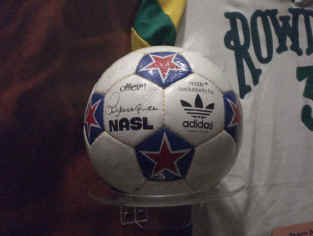
NASL Ball from the 1970’s
(above picture compliments of Miguel Ángel Rodríguez Fernández)
2000 and Beyond
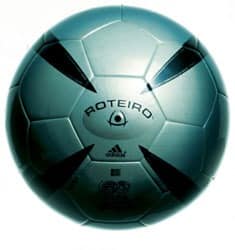
Developments in soccer ball design is continuing. Many companies have recently come out with new high tech materials and designs for soccer balls. The object is to develop the optimum soccer ball that is flight accurate, water proof, fast in flight and transfers all of your kicking force to the ball (does not absorb energy), has soft feel, and is safe to head the ball. Optimum soccer balls should also adhere to ball specifications given by governing bodies such as FIFA.
New balls such as Adidas’ Teamgeist, Jabulani, Roteiro, Finale and Fevernova, Nike’s Nike Seitiro Premier, Geo Merlin, Puma’s Shudah, and Mitre’s ISO use the latest design innovations and high tech materials. For more information on the latest innovations, check out Soccer Ball World’s Soccer Ball Developments page.






